BEGINNER’S INTRODUCTION
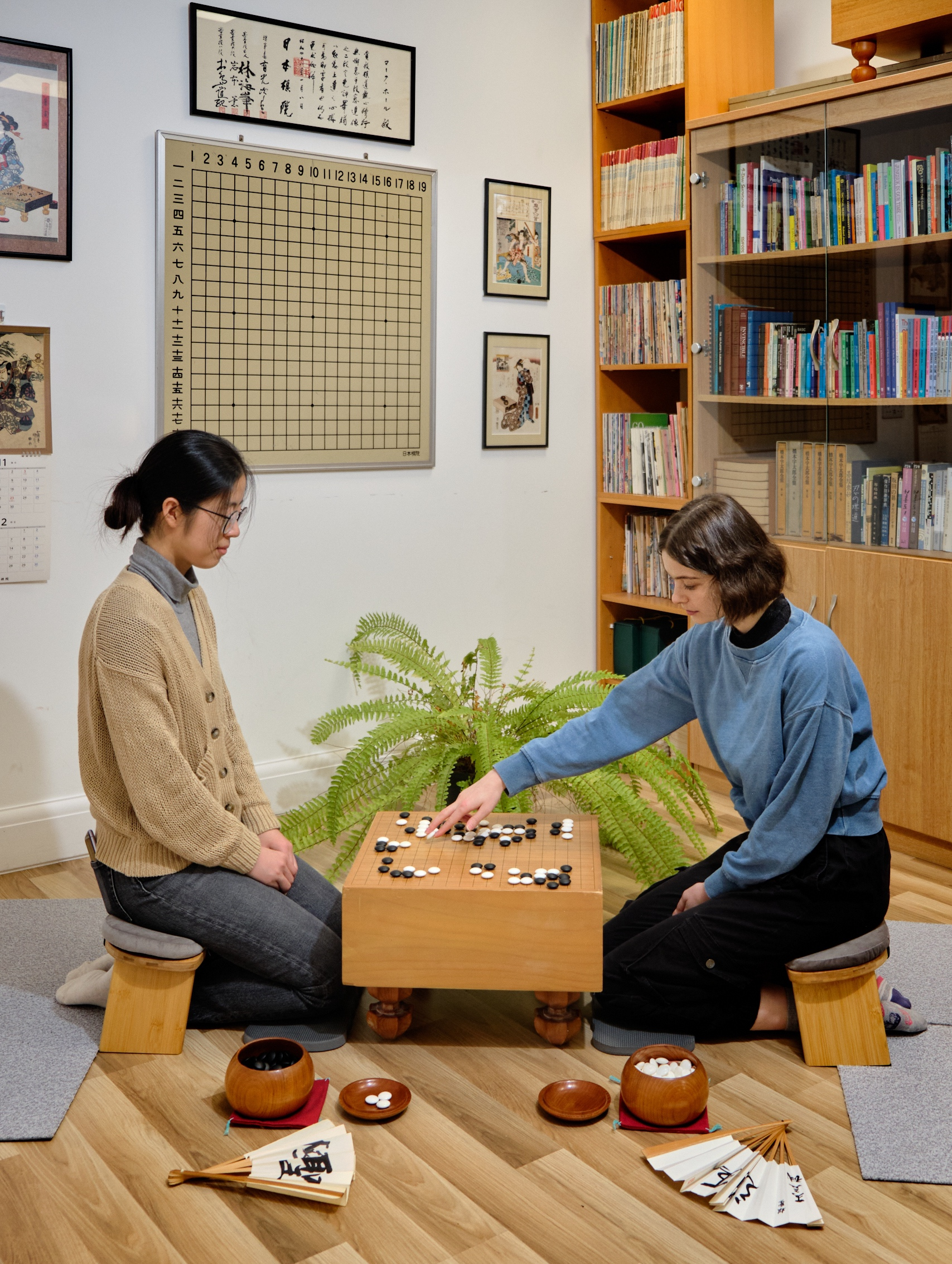 |
It will take you about five minutes to learn to play however because of the complexities arising from the game’s degrees of freedom it will take a long time to master it.
We have a short video on our YouTube channel to give the look and feel of the game.
It is not winner takes all. The objective is to surround more territory than your opponent. During that process you might (usually but not always) engage in a fight for control of some of that territory.
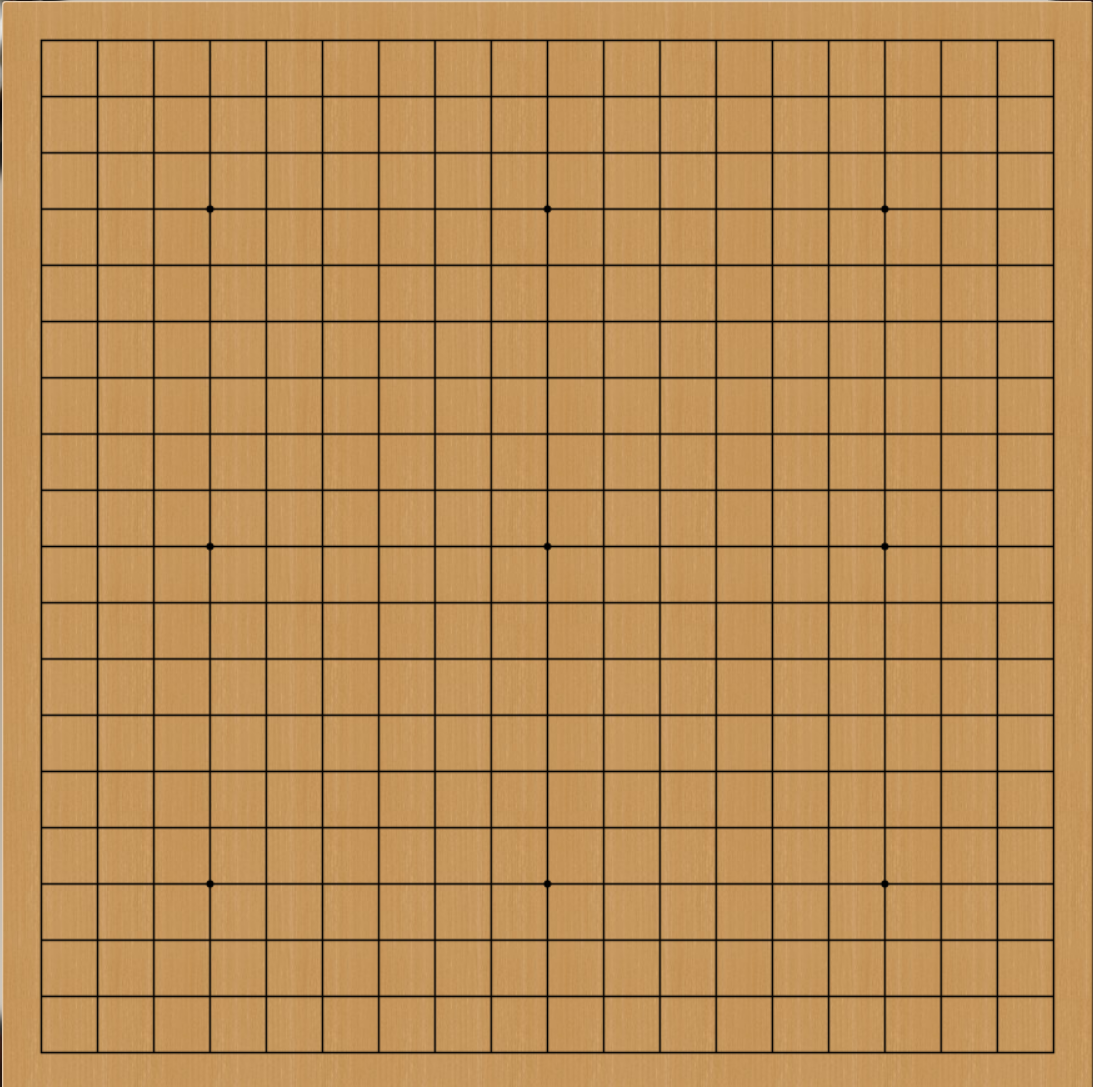 |
| (1) | stones are placed in turn on the intersections (black starts) |
| (2) | once placed, stones remain where they are unless captured (“die”) |
| (3) | you cannot play so your stones die (“commit suicide”) except in one specific circumstance. |
| (4) | you cannot play so as to repeat a previous board position. |
| (a) | Initially rule 4 is probably a little cryptic but in its basic form it is very easy to see on a board (see below). |
| (b) | It’s not a rule, but you can stop playing whenever you like and the game finishes when neither of you want to continue. This idea is converted into a rule for tournament play but that is information for later on. |
| (c) | When neither player wants to continue the game is scored to determine who has won. |
| (d) | There are a number of scoring methods but they do not affect the outcome, again this is information for later. The curious can find the scoring used in our tournaments here. |
If you have watched our video: You might have noticed that the are situations in which Black not only starts but gets some extra stones. You can ignore that facet of the game for now but later you might want to read about handicap Go .
Diversion: Obviously Chess and Go are different games but this discussion of the role of the pieces in each game might prove helpful to some.
THE RULES ILLUSTRATED
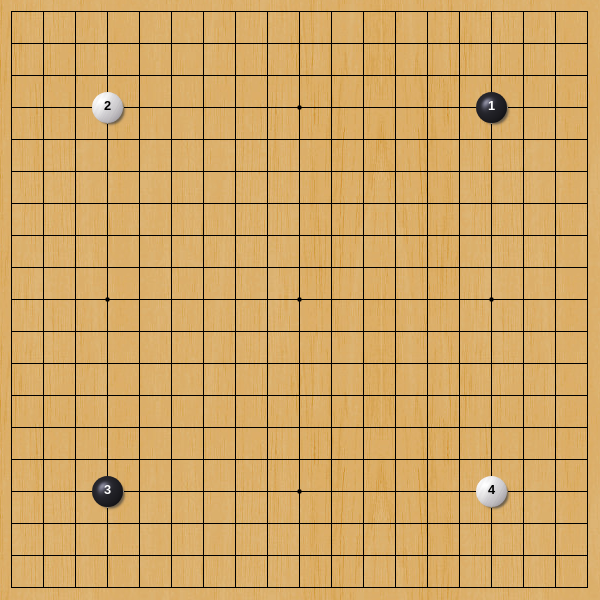 |
| (a) | These are possible first moves but there are many other options. |
| (b) | It’s considered polite for Black to start somewhere in their top right hand corner. |
For later: These four moves are also part of the game similar to the opening in Chess the “fuseki“, the underlying principles of the fuseki have been well researched and you can find out more here
.
 |
If White were to play in the triangled position the Black stone would be captured and removed from the board. |
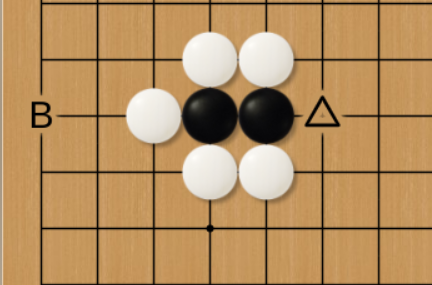 |
More than one stone can be captured if they are surrounded. |
| • | the ladder |
| • | the “net” |
 |
If White were not surrounding the Black stones (if one White stone were not there) then White could not play in the triangled position as that would be suicide.
With Black surrounded, White can play and capture all the Black stones. |
 |
The triangled position does not need to be filled in to surround the Black stones (similar points are also in diagrams A, B and C) Connection is along the lines and not across the diagonals. |
However, in diagram D, although Black is surrounded on the outside, (cannot connect to other Black stones) White would have to fill both of the empty points on the inside to kill the Black stones. White cannot play in either of them because at that moment in the game White would be committing suicide without capturing anything.
| (a) | the Black stones in diagram D cannot die, they are “alive”. |
| (b) | the Black stones in diagram C are dead. In this situation White does not have to finish the job. However in some circumstances White must. |
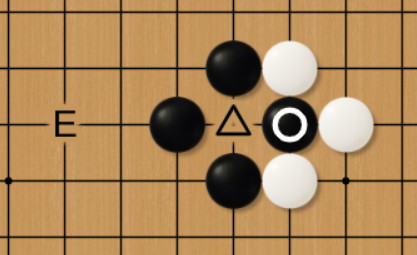 |
Diagram E is intended to illustrate rule 4. It’s also a sort of mirror of diagram A above.
Black has just played the highlighted stone. In which case White could capture it by playing on the triangled point. |
It would seem that Black could capture the single White stone that just captured the Black stone. But then the board would return to the original position (repeating it)
Black has to play somewhere else first (changing the board position).
White can choose to fill in by playing where the captured Black stone used to be or also play somewhere.
If White plays elsewhere the board position has changed so now Black can capture the White stone.
| (a) | simplistically, without this rule the game would enter into a sort of stalemate as capture/recapture could go on forever. |
| (b) | the description though correct fails to represent the consequences arising from rule 4 |
| (c) | people write books about this single topic. It takes a while to understand its importance. |
| (i) | When White takes the black stone it creates a “ko” |
| (ii) | It’s not the ko that matters so much as the “ko fight” |
| (iii) | We describe some of the consequences of the ko fight here using some of the diagrams above as well as introducing other concepts. |
| (iv) | Ko is derived from the Japanese. Europeans tend to use Japanese terms as it was the Japanese that reintroduced the game into Europe during the 19th century. There are equivalent terms in Chinese and Korean. |
And that’s it. You are ready to start playing…
WHAT NEXT?
There are many online resources to help you, we have listed some here, however you don’t need to dive in at this stage.
| part 1 | part 2 |
OGS, an online go server, is free for basic use and has training exercises for beginners.
| • | the 10 Golden Rules of Go (围棋十决) help answer that question |
| • | other guides include Go Proverbs (but these are only guides) |
| • | in due course this list of common terms will be of use |
| • | Go for Beginners by Kaoru Iwamoto (Amazon) |
| • | The American Go Association recommended series by Janice Kim (Amazon) |
WHAT ABOUT LGC?
If you have got this far you must be pretty serious. Playing face to face is the most enjoyable way of learning. Please contact us as we offer free teaching and advice.
BEFORE YOU LEAVE
| “A game shouldn’t be over before it starts“ | |
| Marcus du Sautoy, author of Around the World in 80 Games. |
Play Go and Grow! (pdf) discusses the developmental benefits of games in general and the advantages unique to Go.
This TED talk explores Go’s links to broader societal issues.
You might also find these cultural representations of Go interesting.
Alpha Go is a film about the first time a computer beat a world class Go player.
